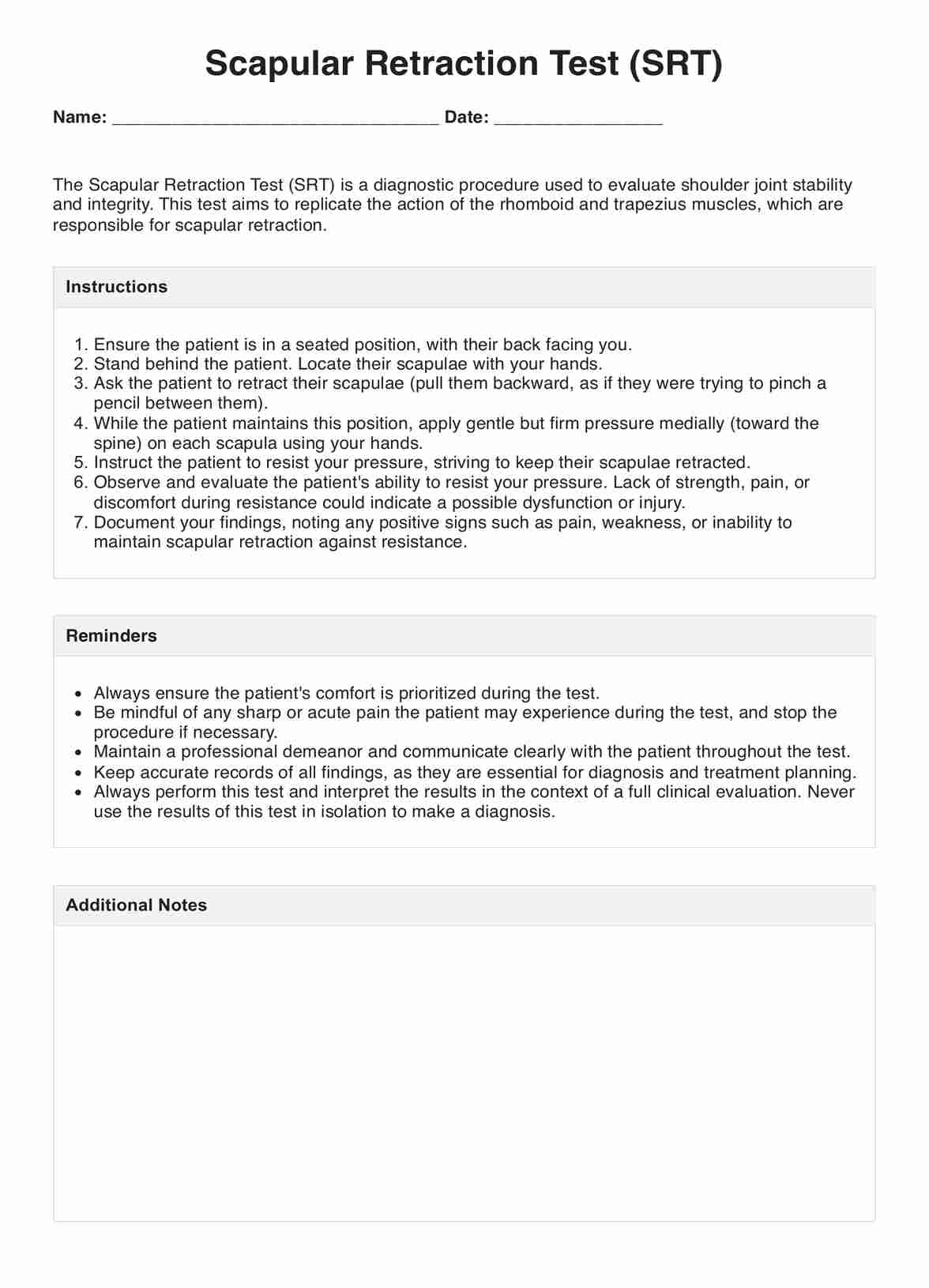The Scapular Retraction Test assesses scapular stability. Instruct the patient to retract their scapula while performing specific arm movements.

Scapular Retraction Tests
Discover how to perform the Scapular Retraction Test (SRT) with a free PDF guide and example.
Use Template
Scapular Retraction Tests Template
Commonly asked questions
You can interpret SRT results based on discomfort, pain, or instability during the test. Positive findings could suggest scapular instability or dysfunction. However, consider combining results with other clinical information for a comprehensive diagnosis.
The Scapular Retraction Test assesses scapular stability and shoulder function. It also provides valuable insights into potential issues and aids in quick and accurate assessment.
EHR and practice management software
Get started for free
*No credit card required
Free
$0/usd
Unlimited clients
Telehealth
1GB of storage
Client portal text
Automated billing and online payments











